| Family | Scientific Name | Common Name | Habitat | Distribution | Image |
|---|---|---|---|---|---|
| Cyperaceae | Carex ×deamii | Bottomland forests. | WV west to MO. |  | |
| Cyperaceae | Carex abscondita | Thicket Sedge | Bottomlands, other mesic forests, seepage swamps. | MA south to Panhandle FL, west to TX and OK, and scattered inland. |  |
| Cyperaceae | Carex acidicola | Mesic forests. | Nc. GA and c. AL south to sw. GA (Naczi, Bryson, & Cochrane 2002). | 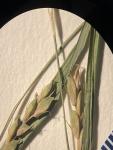 | |
| Cyperaceae | Carex acutiformis | Lesser Pond Sedge | Marsh edges, wet fields. | Native of Eurasia (FNA, Kartesz 1999). Introduced in MD and NY. |  |
| Cyperaceae | Carex aestivaliformis | High-elevation wet meadows, sphagnous beaver wetlands (TN, VA), upland submesic forests (GA, TN). | The distribution is unclear, because of variable treatment in the past. | ||
| Cyperaceae | Carex aestivalis | Summer Sedge | Northern hardwood forests, northern red oak forests, other dry-mesic to mesic forests and moist rock outcrops at medium to high elevations. | VT south to n. GA, in or near the Appalachians. | 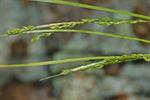 |
| Cyperaceae | Carex aggregata | Glomerate Sedge | Mesic to submesic forests and woodlands, fields, roadsides, other disturbed areas, especially over calcareous substrates. | NY, ON, MN, and SD, south to nc. and nw. NC, TN, and OK. |  |
| Cyperaceae | Carex alata | Broad-winged Sedge | Bottomland forests, beaver ponds, oligohaline tidal marshes, other freshwater marshes, depression ponds. | NH, MI, and MO south to c. peninsular FL and TX. |  |
| Cyperaceae | Carex albicans var. albicans | White-tinged Sedge, Architectural Sedge | Dry woodlands, forests, and clearings. | ME west to IL, and OK, south to DE, NC, SC, n. GA (Jones & Coile 1988), TN, and MO. | 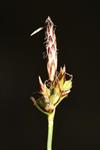 |
| Cyperaceae | Carex albicans var. australis | Southern White-tinged Sedge, Bellow's-beak Sedge | Dry woodlands. | MD south to ne. FL and FL Panhandle, west to AR, OK, TX, and Mexico. |  |
| Cyperaceae | Carex albolutescens | Greenish-white Sedge | Low fields, bottomlands. | MA, NY, WI, and MO, south to Panhandle FL and TX. |  |
| Cyperaceae | Carex albursina | White Bear Sedge | Nutrient-rich cove forests (and less commonly in drier forests), over mafic or calcareous rocks. Rich mesic forests further northward. | VT and s. QC west to MN, south to SC (P. McMillan pers. comm. 2003, specimen at CLEMS), nw. GA, MS (Dorey & Bryson 2016), ne. AL (S. Ward, pers. obs. 2022), and AR. |  |
| Cyperaceae | Carex allegheniensis | Allegheny Sedge | Swamps, bogs, streamhead pocosins, other moist to wet habitats, boggy pools in floodplains. | Primarily from PA south to n. GA, mostly in the Appalachian Mountains; scattered reports more broadly need additional evaluation. |  |
| Cyperaceae | Carex alopecoidea | Seasonally saturated situations, typically over calcareous substrates. | NS west to SK, south to DC, MD, WV, KY, e. TN, and IA (Standley in FNA 2002b). |  | |
| Cyperaceae | Carex amphibola | Eastern Narrowleaf Sedge | Moist loamy forests, bottomlands, slopes, uplands. | MA, s. ON, MI, IL, MO, and OK, south to GA, AL, MS, LA, and TX. |  |
| Cyperaceae | Carex annectens | Yellow-fruited Sedge | Marshes, bottomland forests, drier forests and woodlands. | S. ME west to MN, south to FL and TX. |  |
| Cyperaceae | Carex appalachica | Appalachian Sedge | Dry to mesic forests, rock outcrops. | ME and ON south to w. SC, n. GA, and e. TN. First reported for SC by Hill & Horn (1997) and Gaddy (2014). | 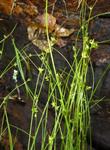 |
| Cyperaceae | Carex aquatilis var. substricta | Aquatic Sedge | Mountaintop ponds (with Dulichium arundinaceum, Vaccinium macrocarpon, Juncus canadensis), mafic fens at high elevation, northwards in sedge meadows and shores. | NL (Newfoundland) west to ND, south to NJ, s. PA, OH, IN, IA, and NE; disjunct in w. VA (Augusta County) and nw. NC (Bluff Mountain, Ashe County, NC). First reported for VA by Wieboldt et al. (1998). |  |
| Cyperaceae | Carex arcta | Northern Cluster Sedge | Seasonally wet swamps and wet forests, meadows. | NL west to AK, south to NY, nw. PA (?), ec. OH, MI, WI, MN, WY, ID, and CA. The records for nw. PA (Presque isle) and e. OH are based on misidentified specimens (S. Grund, pers.comm., 2023). |  |
| Cyperaceae | Carex arctata | Black Sedge, Drooping Woodland Sedge | Northern hardwood and spruce forests, bog edges, moist forests northwards in our region. | NL (Newfoundland) west to MN, south to PA, w. VA, nw. NC (Long Hope Valley, Ashe County; Grandfather Mountain), and OH. First reported for VA (Highland County) by Fleming & Ludwig (1996). |  |
| Cyperaceae | Carex arenaria | Sand Sedge | Moist to dry sandy hammocks; probably introduced from Europe. | In North America, known from DE south to se. NC; also on ballast in OR (Mackenzie 1931-1935). Fernald (1950) considered this plant native in se. VA, and populations of it in Carolina Beach State Park, New Hanover County, NC, certainly appear native. |  |
| Cyperaceae | Carex argyrantha | Silvery-flowered Sedge, Hay Sedge | Grassy balds, mountain meadows, dry-mesic to dry forests, woodlands, clearings, and outcrops. | NB west to ON, south to w. NC, e. TN (Unicoi County), and OH. |  |
| Cyperaceae | Carex arkansana | Arkansas Sedge | Bottomland forests, other wet forests and damp prairies, oak flatwoods, (in VA) in seasonally wet meadow in former railroad yard. | Native range from s. IL, n. MO, and e. KS south through AR and OK to e. TX. See Simmons, Strong, & Parrish (2008) for additional information on the Virginia occurrence. |  |
| Cyperaceae | Carex atherodes | Awned Sedge | Marl fens, bottomland prairies, wet meadows, marshes. | Circumboreal, south in North America to NY, n. VA, n. WV, MO, CO, UT, and OR. |  |
| Cyperaceae | Carex atlantica | Prickly Bog Sedge | Bogs and seepages. | NS west to MI and nw. IN, south to ne. FL, Panhandle FL, and e. TX. |  |
| Cyperaceae | Carex aurea | Golden-fruited Sedge | Wet calcareous sites, prairies, swamps, shores, and disturbed areas. | NL west to AK, south to NY, nw. PA, s. OH, s. IN, s. IL, MN, KS, TX, NM, AZ, and CA. |  |
| Cyperaceae | Carex aureolensis | Southern Frank’s Sedge, Broad-scaled Sedge, Golden Cattail Sedge | Floodplain forests and marshes. | VA, KY, IL, and NE south to n. peninsular FL, Panhandle FL, TX, NM, COA, and NLE; South America. |  |
| Cyperaceae | Carex austrina | Southern Sedge | Dry calcareous prairies, meadows, and forests, also roadsides, apparently introduced eastwards with hay and/or seed mixes used for erosion control. | Native from IA and NE south to LA and TX; more eastern occurrences are at least in part introduced. First reported for areas east of the Mississippi by Bryson et al. (1996). Reported for DE (Longbottom, Naczi, & Knapp 2016). |  |
| Cyperaceae | Carex austrocaroliniana | South Carolina Sedge | Nutrient-rich, moist coves in the sw. mountains of NC and adjacent SC, often with some seepage. | Endemic to the southern end of the Southern Appalachians, in the Blue Ridge of sw. NC, ne. SC, n. GA, and e. TN, extending west to the Cumberland Plateau of TN and se. KY. |  |
| Cyperaceae | Carex austrodeflexa | Canebrake Sedge | Canebrakes and acid swamps, very wet loamy pine savannas. | Coastal Plain, from se. VA to Panhandle FL, west to s. AL; apparently disjunct in w. LA. |  |
| Cyperaceae | Carex austrolucorum | Appalachian Woodland Sedge | Xeric to mesic wooded slopes, usually in oak forests and northern hardwood forests. | Sw. VA, s. WV, e. KY south to nw. SC, n. GA and ne. AL. |  |
| Cyperaceae | Carex backii | Back's Sedge | Rocky woodlands and forests, cliff bases. | QC west to BC, south to NJ, PA, IA, and CO. Historic in our area (NJ, PA). Occurring further north in a few scattered areas of central NY, but otherwise no longer considered extant in our flora region. |  |
| Cyperaceae | Carex baileyi | Bailey's Sedge | Bogs, seeps. | NH south to KY, NC, and TN, primarily Appalachian. |  |
| Cyperaceae | Carex baltzellii | Baltzell's Sedge | Steepheads, beech-magnolia slopes, and mesic to dry-mesic hammocks. | Sw. GA and Panhandle FL west to s. AL and s. MS. |  |
| Cyperaceae | Carex barrattii | Barratt's Sedge | Peaty bogs and marshes, especially in depression ponds, depression swamps, and sinkhole ponds, but also in seepage, such as Piedmont boggy streamheads. | CT south to NC (at least formerly), on the Coastal Plain, and disjunct inland in places with many Coastal Plain affinities, as in w. VA (Augusta County), sw. NC (Henderson County, where now apparently extirpated), nw. SC, sc. TN (Coffee and Warren counties), n. GA, and n. AL. Reported for SC by Hill & Horn (1997) and Horn (1999). See Ungberg (2022) for discussion of its occurrence in NC. |  |
| Cyperaceae | Carex basiantha | Southern Willdenow's Sedge, Widow Sedge | Mesic forests, wet flats, and lower slopes, over calcareous rocks or sediments. | Se. NC south to n. peninsular FL, Panhandle FL, west to e. TX, and north to nw. GA, c. TN, and c. AR. |  |
| Cyperaceae | Carex bebbii | Bebb’s Sedge | Calcareous and mafic wetlands, wet prairies. | NL (Newfoundland), NL (Labrador) and AK south to NJ, nw. VA (Big Meadows, VA; ID uncertain; Weakley, Ludwig, & Townsend 2012), OH, IN, IL, NE, CO, and OR. |  |
| Cyperaceae | Carex bicknellii | Bicknell’s Sedge | Dry prairies, eastwards (SC) in prairie-like openings and barrens over gabbro or serpentine. | ME west to SK, south to DE, OH, MO, OK, and NM; disjunct in nc. SC (where first reported by Hill & Horn 1997). |  |
| Cyperaceae | Carex billingsii | Billings’s Sedge | Wet, boggy areas. | NL (Newfoundland) and ON south to s. NJ (Ocean County), ne. PA, and MI. |  |
| Cyperaceae | Carex biltmoreana | Biltmore Sedge | In thin soils on medium to high elevation granitic domes and other sloping rock outcrops, often dominant in thin-soil herbaceous mats wet by seasonal and post-rainfall seepage, and also occurring in adjacent woodlands under open to nearly closed canopy of Quercus spp., Fraxinus americana, Carya glabra, and Juniperus virginiana. | Endemic to sw. NC, nw. SC, and ne. GA (Rabun and Towns counties) |  |
| Cyperaceae | Carex blanda | Eastern Woodland Sedge, Charming Sedge | Cove forests, bottomlands, and other mesic, nutrient-rich forests. | ME and s. QC west to ND, south to c. GA (Jones & Coile 1988), n. peninsular FL, Panhandle FL, and TX. |  |
| Cyperaceae | Carex breviculmis | Blue Sedge | Cemeteries, lawns, disturbed areas. | Native of e. Asia, se. Asia, and Australia. | 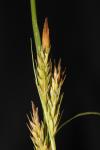 |
| Cyperaceae | Carex brevior | Shortbeak Sedge | Prairies, dry forests, and woodland margins. | ME west to BC, south to n. GA, c. TN, MS, TX, TAM, AZ, and MIC. |  |
| Cyperaceae | Carex bromoides ssp. bromoides | Common Brome Sedge | Swamp forests, bogs, seeps, hydric hammocks, other wetlands, often associated with base-rich soils. | Ssp. bromoides ranges from NB west to e. MN, south to c. peninsular FL and e. TX; allegedly disjunct in s. Mexico, but not in Villaseñor (2016). |  |
| Cyperaceae | Carex bromoides ssp. montana | Blue Ridge Brome Sedge | Mountain bogs in the Blue Ridge, seepages in the Blue Ridge Escarpment. | Endemic to the Southern Blue Ridge of sw. VA, ne. TN, w. NC, and nw. SC. |  |
| Cyperaceae | Carex brunnescens var. sphaerostachya | Brown Sedge | Grassy balds, bogs, spruce-fir forests, northern hardwood forests, moist rock outcrops, at moderate to high elevations. | Var. sphaerostachya is eastern North American, ranging south to NJ, OH, MI, and MN, south to w. NC, e. TN, and n. GA. |  |
| Cyperaceae | Carex brysonii | Bryson’s Sedge | Mesic forests. | Endemic to the Cumberland Plateau and adjacent Coastal Plain of n. AL (falsely reported for MS). |  |
| Cyperaceae | Carex bulbostylis | Globose Sedge | Moist deciduous forests, prairies, open meadows, especially in calcareous areas. | MS west to TX and OK; disjunct in sw. TN. | |
| Cyperaceae | Carex bullata var. bullata | Button Sedge | Bogs, seeps, depression swamps, usually in very acidic settings. | MA south to sw. NC; disjunct westwards in c. AR. | 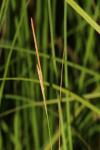 |
| Cyperaceae | Carex bullata var. greenei | Greene's Sedge | Highly acidic wetlands, primarily in the Coastal Plain. | NS south to e. GA, with scattered outliers inland, as in OH, w. NC, ne. TN, Eastern Highland Rim of TN, ne. MS, and AR. |  |
| Cyperaceae | Carex bushii | Bush’s Sedge | Moist to wet (rarely dry) prairies, meadows, fields, and alluvial areas, usually in moderately to strongly base-rich soils. | MA and s. NY west to MO and KS, south to NC, sw. NC (Bradley et al. [in prep.]), GA (Jones & Coile 1988), MS, and TX; disjunct in MI. |  |
| Cyperaceae | Carex buxbaumii | Brown Bog Sedge, Buxbaum's Sedge | Bogs, fens, and seepages (especially over calcareous or mafic rocks, but also in very acid sites). | Circumboreal, in North America ranging from NL (Newfoundland) west to s. and w. AK, south to se. VA, w. NC, nw. SC, n. GA (Jones & Coile 1988), c. TN, KY, n. AR, CO, UT, and CA. Reported for South Carolina by Hill & Horn (1997) and Hill (1999). | 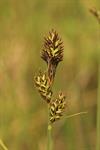 |
| Cyperaceae | Carex calcifugens | Halfsweet Sedge | Rich bluff forests, evergreen maritime forests, rich soils over coquina limestone or shell middens. | Se. NC south to Panhandle FL. |  |
| Cyperaceae | Carex canescens | Silvery Sedge | Acidic bogs, other wetlands. | Greenland and AK south to MD, WV, IL, NM, and CA; South America, Eurasia; Australia. |  |
| Cyperaceae | Carex careyana | Carey's Sedge | Nutrient-rich moist forests, mostly over calcareous rocks. | NY west to MI and IA, south to sw. NC, AL and MO. |  |
| Cyperaceae | Carex caroliniana | Carolina Sedge | Floodplain forests, depression swamps, less commonly in mesic to dry-mesic forests. | NJ, PA, MO, and OK south to SC, e. GA, and TX; apparently disjunct in Panhandle FL and adjacent sw. GA. |  |
| Cyperaceae | Carex caryophyllea | Spring Sedge | Disturbed areas. | Native of Eurasia. |  |
| Cyperaceae | Carex cephaloidea | Heady Sedge | Forests over calcareous or other high pH substrates. | NB, ON, and MN south to WV (Vanderhorst et al. 2019), OH, IN, IL, and IA. |  |
| Cyperaceae | Carex cephalophora | Mesic to dry forests, especially oak-hickory forests. | ME west to MN, south to Panhandle FL and TX. |  | |
| Cyperaceae | Carex chapmanii | Chapman's Sedge | Edges of calcareous pine savannas, calcareous slopes and bottomlands, mesic hammocks, stream terraces. | Se. NC south to c. peninsular FL, on the Coastal Plain; allegedly disjunct in nc. TN (Chester et al. 1993) |  |
| Cyperaceae | Carex cherokeensis | Cherokee Sedge, Wolftail Sedge | Predominantly in moist, rich, calcareous or subcalcareous forests, though introduced populations are not restricted to such settings. | Se. NC, nw. SC, sw. NC, nc. TN, se. MO, and OK, south to n. peninsular FL, Panhandle FL, and west to e. TX and se. OK; disjunct in the Mountains of VA, where perhaps introduced (Belden et al. 2004). |  |
| Cyperaceae | Carex chordorrhiza | Creeping Sedge | Bogs. | NL to AK, south to w. MA, nc. PA, n. IN, ne. IL, nc. IA, nc. ND, MT, WA, and nw. OR. |  |
| Cyperaceae | Carex collinsii | Collins's Sedge | White cedar (Chamaecyparis) bogs, pocosins, and sphagnous, seepage-fed streamhead swamps in the Coastal Plain, bogs in the southwest mountains of NC (where associated with other Coastal Plain disjuncts), usually growing in Sphagnum. | RI to wc. GA on the Coastal Plain, disjunct in the mountains of nw. NJ, PA, sw. NC, and possibly TN (Chester et al. 1993). |  |
| Cyperaceae | Carex communis | Fibrous-rooted Sedge | Dry woodlands and forests, bluffs, rich forests, streambanks. | PE west to MN, south to n. SC, c. GA (Jones & Coile 1988), and AR. |  |
| Cyperaceae | Carex comosa | Bottlebrush Sedge, Bristly Sedge, Porcupine Sedge | Tidal freshwater and oligohaline marshes, tidal and alluvial swamps, calcareous spring marshes, beaver wetlands, and ditches and other wet disturbed areas. | QC west to MN, south to s. FL, LA, se. OK (Hoagland & Buthod 2012), and ne. TX; disjunct in MIC (Villaseñor 2016); also in w. North America. |  |
| Cyperaceae | Carex complanata | Hirsute Sedge | Bottomland forests and swamps, depression swamps, drier barrens. | NJ and s. PA south to n. peninsular FL and Panhandle FL, west to TX and MO; apparently disjunct in AZ. |  |
| Cyperaceae | Carex conjuncta | Soft Fox Sedge | Well-drained floodplain forests, mesic to dry-mesic upland forests over mafic or calcareous rocks. | NY, NJ, MN, and SD, south to VA, sc. TN, n. AL, and AR. |  |
| Cyperaceae | Carex conoidea | Ancient Prairie Sedge | Calcareous and mafic fens and seepages; saturated meadows and fields over limestone, dolomite, or mafic rocks; depressions in upland prairies. | NL (Newfoundland) west to MN, south to nw. NC (Ashe Co. and Alleghany Co.), nw. AR, and MO. First found in NC by a party led by Asa Gray in 1841 "on the moist, grassy brow of a precipice of the Bluff"; located at a second site in NC by D.B. Poindexter. |  |
| Cyperaceae | Carex copulata | Spreading Sedge | Rich, mesic forests of floodplains and slopes. | PA, ON, and WI south to NC, n. AL, and AR. |  |
| Cyperaceae | Carex corrugata | Prune-fruited Sedge | Large-stream and river bottomlands, wet calcareous forests. | Se. VA, KY, and s. OH south to Panhandle FL and AL, west to TX. |  |
| Cyperaceae | Carex crawei | Crawe's Sedge | Calcareous barrens and prairies, usually in gravelly areas with ephemeral or periodic seepage. | QC west to BC, south to NJ, w. VA, c. TN, AL, AR, OK, CO, and AZ. First reported for VA by Ludwig (1999). |  |
| Cyperaceae | Carex crawfordii | Crawford's Sedge | Swamps and marshes, open dryish sandy areas; southwards in disturbed areas such as railroad yards (in MO). | NL west to AK, south to n. NJ, ne. PA, MI, n. IL, IA, CO, ID, and OR. |  |
| Cyperaceae | Carex crebriflora | Coastal Plain Sedge | Bottomland and other nutrient-rich forests. | VA, KY, and AR south to n. peninsular FL and Panhandle FL and TX. |  |
| Cyperaceae | Carex crinita var. brevicrinis | Short-fringed Sedge | Swamps, wet forests, and a wide range of other wetlands. | MA south to FL, west to TX, north in the interior to KY and MO. |  |
| Cyperaceae | Carex crinita var. crinita | Long-fringed Sedge | Swamps, wet forests, bogs, and a wide range of other wetlands. | NL (Newfoundland) west to MN and AB, south to GA, TN, and s. MO. |  |
| Cyperaceae | Carex cristatella | Crested Sedge | Grassy balds, fens, wet meadows, river shores, especially in calcareous or nutrient-rich alluvial soils. | VT west to SK, south to w. NC, KY, MO, and KS. See Fox, Godfrey, & Blomquist (1952) for the first report from NC. |  |
| Cyperaceae | Carex crus-corvi | Crowfoot Sedge, Ravenfoot Sedge | Swamp forests, especially over calcareous substrates. | Se. VA south to Panhandle FL, west to TX, north in the interior to IN, s. ON, MI, and MN. |  |
| Cyperaceae | Carex cryptolepis | Yellow Sedge | Acid, boggy sites. | NL west to MN, south to NJ, NY, s. OH, c. IN, and ne. IL. |  |
| Cyperaceae | Carex cumberlandensis | Cumberland Sedge | Rich, mesic to dry, deciduous or mixed forests, especially over calcareous substrates. | Sw. PA, s. OH, s. IL south to c. NC, c. SC, c. GA, sc. AL, e. MS, and w. TN; disjunct in nw. AR. |  |
| Cyperaceae | Carex cumulata | Dry to wet acid barrens and glades. | NL west to SK, south to NJ, PA, IN, and IL. |  | |
| Cyperaceae | Carex dasycarpa | Velvet Sedge | Maritime forests, hammocks, other sandy forests. | E. SC south to n. peninsular FL, west to MS. Gaddy & Rayner (1980) report this species from a number of barrier islands in Beaufort and Charleston counties, SC; it has since been found in Georgetown County, SC, as well. |  |
| Cyperaceae | Carex davisii | Davis's Sedge | Rich mesic upland forests, rich floodplain forests, calcareous oak savannas, calcareous meadows. | VT, ON, and MN south to VA (Fairfax County) (Steury 2004b), e. WV, nc. TN (Chester et al. 1993), AR, and TX. |  |
| Cyperaceae | Carex debilis | White-edged Sedge, Weak Sedge | Swamps, bogs, other moist to wet habitats. | MA west to s. IN, south to n. peninsular FL, Panhandle FL, and TX. |  |
| Cyperaceae | Carex decomposita | Cypress-knee Sedge, Epiphytic Sedge | Blackwater swamp forests, often growing on cypress knees, cypress bases, or fallen logs (often at or near water level), river sloughs, beaver marshes, less typically inland in sloughs or in depressions in bedrock river scour. | NY west to MI, south to sw. GA (Jones & Coile 1988), Panhandle FL, and TX; rarely disjunct inland from the Coastal Plain, especially in river sloughs or beaver marshes (Bradley et al. [in prep.]). |  |
| Cyperaceae | Carex deweyana var. deweyana | Dewey's Sedge | Rich, rocky forests. | NL west to AK, south to n. NJ, PA, ne. OH, n. IL, IA, SD, NM, and ID. |  |
| Cyperaceae | Carex diandra | Lesser Tussock Sedge | Swamps, bogs, peaty sedge meadows, especially over limestone. | Circumboreal, south in North America to w. MD, PA, TN, OH, IL, CO, CA; also reported from TN on the basis of a destroyed specimen. |  |
| Cyperaceae | Carex digitalis var. digitalis | Slender Woodland Sedge | Mesic to dry forests. | ME west to WI, south to FL and e. TX. |  |
| Cyperaceae | Carex digitalis var. floridana | Southern Slender Woodland Sedge | Rich forests. | VA south to FL, west to TX. |  |
| Cyperaceae | Carex digitalis var. macropoda | Long-spiked Slender Woodland Sedge | Moist to dry forests. | PA and IL south to FL and TX. |  |
| Cyperaceae | Carex disjuncta | Silvery Sedge | Bogs, depression ponds, swamps and marshes (including fresh to oligohaline tidal sites), often in disturbed areas. | NL (Newfoundland) west to MN, south to VA, NC, SC, OH, and IN. | 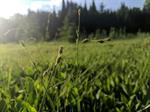 |
| Cyperaceae | Carex disperma | Soft-leaved Sedge | Bogs, acidic swamps. | Circumboreal, south in North America to n. NJ, c. PA, n. OH, n. IN, ne. IL, MN, SD, NM, AZ, and CA. |  |
| Cyperaceae | Carex distans | Disturbed areas. | Introduced in MD and PA; native of Eurasia. |  | |
| Cyperaceae | Carex distenta | Widow Sedge | Waif on ballast. | ||
| Cyperaceae | Carex divisa | Divided Sedge, Separated Sedge | Brackish and oligohaline marshes. | Native of the Old World. |  |
| Cyperaceae | Carex divulsa | Fields, pastures, disturbed areas. | Native of Europe and w. Asia. Reported for Washington, DC, and MD. |  | |
| Cyperaceae | Carex douglasii | Apparently a waif in urban St. Louis, MO. | Native of w. North America. | ||
| Cyperaceae | Carex duriuscula | Spikerush Sedge | Apparently a waif in urban St. Louis, MO. | Native of w. and nc. North America, east to n. IL. | |
| Cyperaceae | Carex eburnea | Ebony Sedge, Bristleleaf Sedge | Calcareous cliffs, bluffs, and outcrops, westwards also in calcareous woodlands. | NL (Newfoundland) west to AK, south to w. VA, w. NC, nw. SC, c. AL, n. AR, NE, s. AB, and s. BC; early reports of this species from TX are referable to C. mckittrickensis P.W. Ball. |  |
| Cyperaceae | Carex echinata ssp. echinata | Star Sedge | Bogs, seeps, fens. | Ssp. echinata is circumboreal, ranging in North America from NL (Newfoundland) west to SK, south to DE, PA, IN, IA, and ND, and in the mountains to w. NC, nw. SC {Bradley et al. [in prep.]), and e. TN; also in w. North America from AK (Aleutians) and BC south to CO, UT, and s. CA. |  |
| Cyperaceae | Carex echinodes | Bottomland forests. | QC west to MB, south to CT, s. OH, s. IN, IL, MO, and e. NE. |  | |
| Cyperaceae | Carex edwardsiana | Edwards Plateau Sedge | Ravine slopes over calcareous substrates. | Nearly endemic to the Edwards Plateau, but edging into the Blackland Prairie region. | |
| Cyperaceae | Carex elliottii | Elliott’s Sedge | Bogs. | E. NC south to c. pen. FL and west to s. AL. |  |
| Cyperaceae | Carex emmonsii | Emmons’s Sedge | Longleaf pine sandhills, maritime forests, wet pine flatwoods, mesic or dry upland forests, sandy woodlands. | NS west to ON and WI, south to SC, GA, AL, MS, and AR. |  |
| Cyperaceae | Carex emoryi | Emory’s Sedge | Calcareous fens, spring marshes, wet meadows, seepages, ditches, rocky river scours, other wetlands. | NY and ND south to w. VA, s. IL, AR, TX, COA, and NLE. |  |
| Cyperaceae | Carex exilis | Meager Sedge, Exiled Sedge | Peaty seepage bogs. | NL (Newfoundland) and NL (Labrador) west to ON and n. MN, south to NJ, DE, MD, NY, n. MI, n. WI, and n. MN; disjunct southward in the Atlantic Coastal Plain of sc. NC and in the Gulf Coastal Plain of se. MS, sw. GA, and sw. AL. The southern occurrences are remarkably disjunct from the Canadian, northern Coastal Plain, and Great Lakes distribution. |  |
| Cyperaceae | Carex extensa | Long-bracted Sedge | Salt marshes, introduced around seaports. | Native of Europe. |  |
| Cyperaceae | Carex festucacea | Fescue Sedge | Bottomland forests, depression ponds and swamps, wet meadows. | VT west to MN, south to GA, Panhandle FL, AL, MS, LA, and TX. |  |
| Cyperaceae | Carex fissa var. aristata | Hammock Sedge | Wet pine savannas, roadside banks and ditches. | Extreme se. SC (Jasper Co.), s. GA (Clinch County) (Carter, Baker, & Morris 2009; Sorrie 1998b) south to c. peninsular FL, west to FL Panhandle and s. MS (Bryson et al. 1996). |  |
| Cyperaceae | Carex fissa var. fissa | Western Hammock Sedge | Prairie depressions, eastwards introduced in disturbed areas, including roadside ditches, sediment control ponds, and old railroad stockyards (well-established). | S. IL, MO, se. KS, and OK south to AR, se. TX, and TAM. See Simmons, Strong, & Parrish (2008) for additional information about the VA occurrence, and Knapp et al. (2011) and Longbottom, Naczi, & Knapp (2016) about the MD and DE occurrences. McKenzie & Nelson (2022) discussed occurrences in MO. |  |
| Cyperaceae | Carex flacca | Glaucous Creeping Sedge | Depression in successional woodlands. | Native of Europe. Reported for Portage County, OH (Riley, Vincent, & Widrlechner 2020). |  |
| Cyperaceae | Carex flaccosperma | Meadow Sedge | Mesic forests, well-drained bottomlands. | MD and se. VA south to Panhandle FL, west to TX, north in the interior to s. MO and IL. | 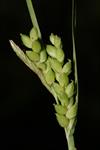 |
| Cyperaceae | Carex flava | Yellow Sedge | Calcareous fens and seeps. | Circumboreal, ranging south in North America to NJ, PA, IN, ID, and BC; disjunct in sw. VA (Giles County). First reported for VA by Wieboldt et al. (1998). |  |
| Cyperaceae | Carex flexuosa | Flexuous White-edge Sedge, Rudge’s White-edge Sedge | Dry to moist upland forests, openings, grassy balds, granitic domes, rock outcrops. | NL (Newfoundland) west to MN, south to VA and MO, and in the Appalachian Mountains to w. NC and e. TN. |  |
| Cyperaceae | Carex floridana | Florida Sedge | Mesic hammocks, dry hammocks, maritime forests. | S. NJ south to c. peninsular FL, west to TX. See McAvoy (2021) for discussion of the occurrence of this species in NJ, MD, DE, and VA. |  |
| Cyperaceae | Carex foenea | Hay Sedge | Dry woodlands. | NL (Labrador) and NL (Newfoundland) west to YT, south to CT, NY, s. NJ, PA, MI, and ID. |  |
| Cyperaceae | Carex folliculata | Northern Long Sedge | Bogs, boggy forests, high elevation forests (spruce-fir). | NL (Newfoundland) west to WI, south to NC and e. TN. |  |
| Cyperaceae | Carex formosa | Handsome Sedge | Dry, calcareous forests. | QC west to ND, south to n. NJ, c. PA, nw. OH, ne. IL, and MN. |  |
| Cyperaceae | Carex frankii | Frank’s Sedge, Cattail Sedge | Bottomland forests, other wet to moist forests and disturbed areas. | W. NY and s. ON west to MI and se. NE, south to GA, AR, and OK. |  |
| Cyperaceae | Carex fraseriana | Fraser's Sedge, Lily-leaf Sedge | Cove forests, mostly rather acidic and associated with Rhododendron maximum, at moderate elevations. | A Southern and Central Appalachian endemic: w. MD and s. PA south through w. VA and WV to w. NC, e. TN, nw. SC, and n. GA (Jones & Coile 1988). |  |
| Cyperaceae | Carex fumosimontana | Smoky Mountain Sedge | Seepages at high elevations. | Endemic to the Great Smoky Mountains National Park (Cocke and Sevier counties, TN, Swain County, NC), specifically Clingmans Dome, Mount LeConte, and Mount Guyot. |  |
| Cyperaceae | Carex garberi | Garber's Sedge, Elk Sedge | Sandy swales and calcareous gravel shores. | NL (Labrador) west to AK, south to NY, nw. PA, n. OH, nw. IN, ne. IL, n. MN, ND, MT, ID, and OR. In the northeastern United States, this taxon is at its southern limit within the Great Lakes region. It is only known from our area in Erie County, PA (S. Grund, pers. comm., 2022). In this area of nw. PA and adjacent areas of w. NY, Carex garberi is rare and grows atop calcareous rocks and escarpments associated with large rivers and other bodies of water, as well as in calcareous fens and similar seepages. |  |
| Cyperaceae | Carex geyeri | Geyer's Sedge | Limestone bluff. | AB and BC south to NM, AZ, and n. CA; disjunct in c. PA (Centre County). |  |
| Cyperaceae | Carex gholsonii | Gholson's Sedge | Moist calcareous forests, especially marl flats and bottomlands over coquina. | E. NC south to c. peninsular FL, west to s. AL. |  |
| Cyperaceae | Carex gigantea | Giant Sedge | Swamps, bottomland forests, cypress depressions. | DE south to s. FL, west to e. TX, north in the interior to nw. GA (Jones & Coile 1988), IN and OK. | 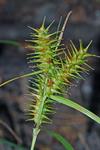 |
| Cyperaceae | Carex glaucescens | Blue Sedge, Southern Waxy Sedge | Blackwater swamps, pocosins, wet pine savannas, seepage bogs, depression ponds, pondcypress savannas, other acid and peaty situations. | E. MD south to c. peninsular FL, west to e. TX and se. OK (Buthod & Hoagland 2013); disjunct in nw. GA (Jones & Coile 1988) and c. TN. |  |
| Cyperaceae | Carex glaucodea | Blue Sedge | Prairies, upland woodlands, especially in hardpan situations with alternating wet and dry conditions. | MA and ON west to s. IN and MO, south to NC, sc. TN, and AR. {distribution and abundance needing additional herbarium investigation} |  |
| Cyperaceae | Carex godfreyi | Godfrey's Sedge | Calcareous swamps, bottomlands, and mesic forests. | Se. NC south to se. GA, c. peninsular FL south to Martin County (FL), and west to Panhandle FL, sw. GA, and s. AL. |  |
| Cyperaceae | Carex gracilescens | Slender Loose-flowered Sedge | Moist, nutrient-rich forests, calcareous hammocks. | VT and s. QC west to WI, south to SC, AL, LA, and e. TX; disjunct in sw. GA and Panhandle FL. |  |
| Cyperaceae | Carex gracillima | Graceful Sedge | Moist ravine and slope forests, floodplains of rivers and large creeks. | NL (Newfoundland) west to MB, south to SC (Gaddy et al. 1984), n. GA, AL, and n. AR. |  |
| Cyperaceae | Carex granularis | Limestone Meadow Sedge, Corncob Sedge | Moist, nutrient-rich forests, especially bottomlands, mostly over calcareous rocks (limestone, dolostone, coquina limestone) or mafic rocks (diabase). | ME and QC west to SK, south to GA, FL (Ward 2021), OK, and ne. TX. |  |
| Cyperaceae | Carex gravida | Pregnant Sedge, Heavy Sedge | Damp, mesic, or dry calcareous prairies, fields, pastures, roadsides. | ON west to SK, south to TN, MS, AR, TX, and NM, rarely introduced eastward. Steury (1999) reported var. lunelliana as new to MD (Calvert County). Reported for DE (Longbottom, Naczi, & Knapp 2016). |  |
| Cyperaceae | Carex grayi | Gray’s Sedge | Bottomland forests, tidal swamps. | Sw. QC west to WI and IA, south to nw. GA and OK; disjunct in Panhandle FL. |  |
| Cyperaceae | Carex grisea | Inflated Narrowleaf Sedge | Well-drained floodplain forests, other mesic to dry-mesic forests, especially over base-rich substrates. | NB west to MN and SD, south to VA, TN, MS, LA, and TX. {habitats, distribution and abundance in our area needing additional herbarium investigation} |  |
| Cyperaceae | Carex gynandra | Nodding Sedge | Bogs, swamp forests, seepages, beaver wetlands. | NL (Newfoundland) west to MN, south to WI, n. VA, w. NC, n. GA, e. TN, OH, and WI. This is the most montane and northern element of the C. crinita complex, and the usual one encountered in the Mountains of our area. |  |
| Cyperaceae | Carex gynocrates | Northern Bog Sedge | Fens, calcareous seeps. | Greenland, Baffin Island, and Alaska south to ME, NY, w. PA (an old collection by Goldie), MI, WI, MN, ND, NM, UT, NV, and OR; Siberia. | 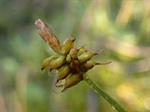 |
| Cyperaceae | Carex haydenii | Hayden’s Sedge | Wet meadows, wet prairies, minerotrophic fens. | NL (Newfoundland) and QC west to SD, south to s. PA, MD (C. Frye, pers. comm., 2000), IL, and IA. | 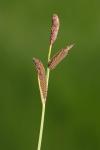 |
| Cyperaceae | Carex heliophila | Plains Sedge | Dry to mesic upland forests, sandy, loamy, or loess prairies. | ON west to BC, south to MI, IN, IL, MO, OK, NM, and WA. |  |
| Cyperaceae | Carex hirsutella | Hairy-leaved Sedge, Fuzzy Sedge | Dry-mesic oak-hickory forests, other mesic to dry forests, woodlands, and barrens. | ME, s. ON, and IA, south to GA and ne. TX. |  |
| Cyperaceae | Carex hirta | Dry sandy areas. | Native of Eurasia. The report of C. hirta for NC (Burk 1961, RAB) is based on a misidentification of C. pumila (Reznicek 1993). |  | |
| Cyperaceae | Carex hirtifolia | Pubescent Sedge | Nutrient-rich, though often rather dry, forests and woodlands. | NB west to MN, south to MD, sw. VA, c. TN, KY, MO, and e. KS. |  |
| Cyperaceae | Carex hitchcockiana | Hitchcock’s Sedge | Rich, moist to dry forests, especially over limestone, other calcareous, or mafic rocks. | MA west to MN, south to NC, sc. TN, and AR. |  |
| Cyperaceae | Carex hormathodes | Marsh Straw Sedge | Freshwater and slightly brackish tidal marshes, interdune ponds. | NL (Newfoundland) south to ne. NC, along the coast. |  |
| Cyperaceae | Carex howei | Howe's Sedge, Prickly Bog Sedge | Bogs and seepages, often growing in Sphagnum. | NS west to MI and nw. IN, south to c. peninsular FL and e. TX, predominantly (but by no means strictly) on the Coastal Plain. |  |
| Cyperaceae | Carex hyalina | Bottomland forests. | TN, AR, and OK, south to MS, LA, and TX. | ||
| Cyperaceae | Carex hyalinolepis | Shoreline Sedge | Tidal marshes, tidal and nontidal swamp forests. | NJ south to Panhandle FL, west to TX, north in the interior to KS and NE; disjunct around the Great Lakes in MI, IN, and s. ON. |  |
| Cyperaceae | Carex hystericina | Porcupine Sedge | Calcareous fens, marshes, and wet meadows, in seepage over serpentine. | NB west to BC, south to w. VA, sc. TN, w. TX, and n. CA. |  |
| Cyperaceae | Carex ignota | Incognito Sedge, Incognito Lined Sedge | Mesic slope and ravine forests, upper terraces of floodplains in bottomland hardwood forests. | E. SC south to n. FL, west to w. TN, e. TX, and AR. |  |
| Cyperaceae | Carex impressinervia | Moist forests, along small streams and lower mesic slopes, probably associated with mafic or calcareous rocks.. | Sc. NC south to AL and west to MS, apparently very rare and widely scattered. |  | |
| Cyperaceae | Carex interior | Inland Sedge | Calcareous or ultramafic seeps, fens, and wet meadows. | NL (Newfoundland) and NL (Labrador) west to s. AK, south to w. VA, n. AR, n. AZ, and n. CA; disjunct in Mexico (CHI) (but not in Villaseñor 2016). |  |
| Cyperaceae | Carex intumescens var. fernaldii | Fernald’s Bladder Sedge | Spruce-fir forests, northern hardwood forests, grassy balds. | NL (Newfoundland) west to MB, south to NY, n. PA, MI, MN, and, at higher elevations in the Appalachians, to w. VA, w. NC, and e. TN. | |
| Cyperaceae | Carex intumescens var. intumescens | Bladder Sedge, Pregnant Sedge | Bogs, fens, seeps, wet forests. | NS west to WI, south to c. peninsular FL and e. TX. |  |
| Cyperaceae | Carex jamesii | James's Sedge | Nutrient-rich bottomlands, levee forests, and mesic slopes over calcareous or mafic rocks. | MD and NY west to MI, MN, and e. NE, south to c. SC, GA, and LA. |  |
| Cyperaceae | Carex joorii | Joor's Sedge, Hummock Sedge, Cypress-swamp Sedge | Swamps, upland depression swamps in the Piedmont, sphagnous wetlands. | E. MD south to n. peninsular FL and Panhandle FL, west to e. TX, north in the interior to TN, MO, and OK. |  |
| Cyperaceae | Carex juniperorum | Juniper Sedge | On edges of calcareous glades and barrens, in subxeric to submesic calcareous woodlands. | This species was recently described, and is so far known only from alvars in s. ON, calcareous glades and barrens in s. OH and ne. KY, and has recently been found in Montgomery Co., VA (Belden et al. 2004) and Botetourt Co., VA (Townsend, pers. comm., 2008). |  |
| Cyperaceae | Carex kobomugi | Sea Isle Sedge, Japanese Beach Sedge, Asian Sand Sedge | Sand dunes, especially on fore-dunes. | Native of Japan. | 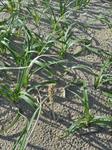 |
| Cyperaceae | Carex kraliana | Kral's Sedge | Mesic forests, slightly acidic to circumneutral. | MD, WV (Vanderhorst et al. 2019), OH, and IN south to Panhandle FL and TX. |  |
| Cyperaceae | Carex lacustris | Lakeshore Sedge, Lakeside Sedge | Calcareous spring marshes, freshwater to oligohaline tidal marshes. | QC west to SK, south to e. VA, w. VA, and NE. |  |
| Cyperaceae | Carex laeviconica | Smooth-cone Sedge | Moist forests and wetlands. | ON west to SK, south to IL, MO, KS, and MT. |  |
| Cyperaceae | Carex laevivaginata | Smooth-sheathed Sedge | Marshes, swamp forests, alluvial forests. | MA, MI, and MN, south to Panhandle FL, AL, and MO. |  |
| Cyperaceae | Carex lasiocarpa var. americana | Slender Sedge | In shallow water of alkaline spring seeps, on hummocks in acidic basin marshes, and in high elevation fen over amphibolite. | A circumboreal species; var. lasiocarpa is Eurasian, var. americana ranges from NL west to AK, south to NJ, WV, MD (C. Frye, pers. comm. 2000), VA, nw. NC, MO, IA, CO, UT, and n. CA. Reported for the Ozark portion of MO (J. Thomas, pers. comm., 2020). First reported for VA by Wieboldt et al. (1998). Found for the first time in NC in the valley of Long Hope Creek (Ashe County, NC), in Jul 1999 by A.S. Weakley and P.D. McMillan. | 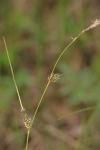 |
| Cyperaceae | Carex latebracteata | Waterfall's Sedge | Dry-mesic to mesic forests over calcareous or subcalcareous substrate. | Endemic to the Ouachita Mountains of AR and OK. | |
| Cyperaceae | Carex laxiculmis | Spreading Sedge | Slope or alluvial forests, both acidic and rich. | S. ME west to s. WI and s. IA, south to NC, nw. GA (Jones & Coile 1988), n. AL, and MO. |  |
| Cyperaceae | Carex laxiflora | Broad Loose-flowered Sedge | In a wide range of moist to dry, acidic to nutrient-rich forests. | NL west to ON, south to GA, FL Panhandle, MS, and LA. |  |
| Cyperaceae | Carex leavenworthii | Leavenworth’s Sedge | Dry forests, especially in sandy soils. | NY, ON, and NE south to Panhandle FL and TX. Reported for DE (Longbottom, Naczi, & Knapp 2016), and considered "likely non-native" there. |  |
| Cyperaceae | Carex leptalea var. harperi | Harper’s Sedge | Bogs, seeps, blackwater bottomlands, usually in saturated conditions with Sphagnum spp. | NJ south to c. peninsular FL, west to TX, inland in the interior to IN and AR. |  |
| Cyperaceae | Carex leptalea var. leptalea | Bristly-stalk Sedge | Bogs, seeps, usually in saturated conditions with Sphagnum spp. | NL (Labrador) west to AK, south to NC, TN, MO, SD, NM, and CA. |  |
| Cyperaceae | Carex leptonervia | Nerveless Woodland Sedge | Nutrient-rich forests, such as rich, seepy northern hardwoods forests. | NL (Newfoundland) west to MN, south to NJ, PA, IN, and WI, and in the Appalachians south to NC and SC (L.L. Gaddy, pers.comm., 2009). |  |
| Cyperaceae | Carex limosa | Mud Sedge | Bogs, swamps, wet meadows, medium to poor fens and bogs. | Circumboreal, south in North America to se. PA (Dauphin County, Rhoads & Klein 1993; Rhoads & Block 2007), NJ, DE (historical), OH, IN, NE, UT, and CA. More commonly northward in a variety of medium to poor peatlands. This inherently northern species of peatland habitats does occur very sparingly southward to portions of our region. It is extirpated from DE and is now apparently extant in only one or a few location(s) each in NJ and OH; but locally abundant and probably S3 in PA (S. Grund, pers. comm., 2023). Carex limosa was likely never legitimately collected from s. IN and is considered S1 in the northern portions of the state (S. Namestnik, pers. comm., 2023). |  |
| Cyperaceae | Carex livida | Bogs and fens. | Circumboreal, south in North America to s. NJ, NY, MI, IN, MN, CO, and CA; also disjunct in Panama and South America. | 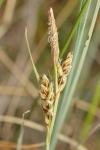 | |
| Cyperaceae | Carex lonchocarpa | Southern Long Sedge | Pocosin margins, small blackwater stream swamps, bogs. | S. MD south to ne. FL and Panhandle FL, west to e. TX; rarely inland, as in sc. TN. |  |
| Cyperaceae | Carex longii | Long's Sedge | Bogs, low fields, bottomlands, oak flatwoods. | NS west to WI, south to s. FL and TX. |  |
| Cyperaceae | Carex louisianica | Louisiana Sedge | Floodplain forests and other wet forests. | NJ south to ne. FL, Panhandle FL, west to TX, north in the interior to KY, IN, and MO; disjunct in ne. OH. McAvoy (2021) documented the occurrence of the species in DE. |  |
| Cyperaceae | Carex lucorum | Northern Woodland Sedge | Moist forests. | NB west to MN, south to MD (Cecil County; C. Frye, pers. comm. based on specimen at DOV), DE (Knapp et al. 2011), and PA. |  |
| Cyperaceae | Carex lupuliformis | Umbo Sedge, False Hop Sedge | Wet forests, floodplain pools, blackwater, tidal, and brownwater swamps, riverbanks, especially in or around seasonal ponded areas, maybe especially associated with alkaline areas. | VT and QC west to se. WI, south to s. FL and e. TX. |  |
| Cyperaceae | Carex lupulina | Hop Sedge | Bottomland forests, wet meadows, marshes, swamps. | NS west to MN, south to ne. FL and e. TX. |  |
| Cyperaceae | Carex lurida | Sallow Sedge | Bogs, fens, swamps, marshes, ditches, and other wetlands. | NS west to MN, south to c. peninsular FL, Panhandle FL, and Mexico (COA, MEX, MOR, VER). |  |
| Cyperaceae | Carex lutea | Golden Sedge | Wet pine savannas shallowly underlain by coquina limestone, with open canopy of Taxodium ascendens, Pinus palustris, and Liriodendron tulipifera, also more acid substrates in Panhandle FL, where in wet pineland ecotones between sandhills and small stream swamps. | Known from isolated locations in NC, SC, and FL. Originally thought to be endemic to Pender and Onslow counties, NC (where associated with other narrow endemics, such as Thalictrum cooleyi and Allium species 1, and other rare species, such as Plantago sparsiflora, Parnassia caroliniana, Rhynchospora thornei, and others), but discovered in 2021 in e. SC (Francis Marion NF) and Panhandle FL (by Lilly Anderson-Messec). |  |
| Cyperaceae | Carex macrocephala | Sandy beaches. | Native of e. Asia. | 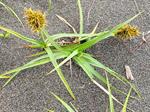 | |
| Cyperaceae | Carex macrostachys | ||||
| Cyperaceae | Carex manhartii | Blue Ridge Purple Sedge, Manhart's Sedge | Cove forests and montane oak-hickory forests, mostly at medium to fairly high elevations, especially over mafic rocks (such as amphibolite) and calcareous rocks (such as marble), but occurring on more acidic substrates as well. | Endemic to s. WV, sw. VA, w. NC, nw. SC, ne. GA, and se. TN, in the Blue Ridge Mountains. Once considered very rare, this species is now known to be locally common in portions of sw. NC and adjacent ne. GA. For more information on the VA occurrence, see Belden et al. (2004). |  |
| Cyperaceae | Carex meadii | Mead's Sedge | Mesic to wet prairies, loess prairies, limestone barrens and glades, open woodlands and savannas over calcareous substrates, on low, moist clayey or loamy soils over mafic or ultramafic rocks (such as diabase or serpentine) or calcareous rocks. | S. NY, NJ, MI, and SK, south to nc. SC, nw. GA, sw. LA, se. TX, and CHI. |  |
| Cyperaceae | Carex melanostachya | Ditches and wet or moist disturbed areas. | Native of Eurasia. | ||
| Cyperaceae | Carex merrittfernaldii | Dry sandy and other acid places. | NB west to MB, south to NY (Long Island), n. OH, s. WI, and MN. |  | |
| Cyperaceae | Carex mesochorea | Midland Sedge | Mesic to dry forests and woodlands, dry grassy areas. | MA, ON, and NE south to GA, AL, and TX. First reported for South Carolina by Hill & Horn (1997). |  |
| Cyperaceae | Carex michauxiana | Michaux's Sedge | Bogs, seeps, usually in Sphagnum. | NL (Labrador) and MB south to MA, n. MI, n. WI, n. MN, and SK; disjunct in w. MD. | 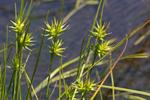 |
| Cyperaceae | Carex microdonta | Little-tooth Sedge | Limestone glades, calcareous prairies, Jackson prairies (MS), limestone barrens, and dry Black Belt chalk prairies, including disturbed sites, where often locally dominant. | AL and Panhandle FL west to MO, KS, OK, TX, NM, and AZ. |  |
| Cyperaceae | Carex misera | Wretched Sedge | Moderate to high elevation cliffs and rock outcrops. | A Southern Blue Ridge endemic: nw. NC and w. TN south to ne. GA (Rabun County) and nw. SC. Discovered for SC in 2022 (S. Tessel, pers.comm. 2022). | 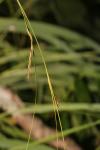 |
| Cyperaceae | Carex missouriensis | Missouri Sedge | Prairie swales. | Wc. IN, IL west through s. IA and MO to se. NE and e. KS |  |
| Cyperaceae | Carex mitchelliana | Mitchell's Sedge | Swampy woodlands and forests, seeps. | Se. MA west to PA and KY, south to Panhandle FL, n. AL, and sc. TN. This species has a scattered distribution throughout its range, and is apparently rare. |  |
| Cyperaceae | Carex molesta | Troublesome Sedge | Dry to moist calcareous soils in calcareous glades and open woodlands. | NH west to ND, south to VA, AL, MS, and OK. |  |
| Cyperaceae | Carex molestiformis | Frightful Sedge | Bottomland forests, wet meadows, ditches, ravines, especially over calcareous substrates. | W. VA, WV, s. OH, c. KY, and c. MO south to nw. NC, n. GA, c. TN, n. MS, sw. AR, and se. OK (likely to be more widespread after further study). |  |
| Cyperaceae | Carex muehlenbergii var. enervis | Muhlenberg’s Sedge | Dry and often acidic woodlands and meadows. | NH west to MN and NE, south to GA, AL, MS, and TX. |  |
| Cyperaceae | Carex muehlenbergii var. muehlenbergii | Muehlenberg’s Sedge | Dry to dry-mesic hammocks and woodlands. | ME, ON, and MN south to Panhandle FL and TX. |  |
| Cyperaceae | Carex muricata ssp. lamprocarpa | Fields, pastures, lawns, disturbed areas. | A European alien, with known occurrences south to e. PA (Rhoads & Block 2007) and MD. | ||
| Cyperaceae | Carex muskingumensis | Muskingum Sedge | Floodplain forests. | ON and MN south to KY, TN, e. AR, and OK. |  |
| Cyperaceae | Carex nebrascensis | Nebraska Sedge | Wet meadows, swamps, moist areas. | Native of the western Great Plains and Rocky Mountains. |  |
| Cyperaceae | Carex nigromarginata | Black-edged Sedge | Dry woodlands and forests. | DE and NJ west to WI, south to SC, GA, and TX. |  |
| Cyperaceae | Carex normalis | Greater Straw Sedge | Mesic to wet forests, moist prairies, marshes, seeps. | ME, QC, and ON south to GA and AR. |  |
| Cyperaceae | Carex novae-angliae | New England Sedge | Moist forests. | NL (Newfoundland) and ON, south to e. PA, n. WV, and WI. |  |
| Cyperaceae | Carex oblita | Southern Dark Green Sedge | Bogs, seeps, sphagnous swamps. and other wet habitats. | NY (Long Island) and NJ south to sc. GA, west to w. LA, mostly on the Coastal Plain, but extending much less commonly inland to the Piedmont and Mountains. |  |
| Cyperaceae | Carex oklahomensis | Oklahoma Sedge | Seepages, disturbed wetlands, roadside ditches, eastwards probably adventive. | Se. MO west to KS, south to AR, and ne. TX; disjunct (and apparently adventive) in various scattered sites east of the Mississippi River, as in AL, MS, GA, w. NC (Graham County) and w. VA (Giles County). First reported for VA by Wieboldt et al. (1998). See Bryson & Rothrock (2010) for further discussion; they consider that this species is "introduced during highway and reservoir construction or maintenance in contaminated hay, grass seeds or on construction, maintenance, and mowing equipment." |  |
| Cyperaceae | Carex oligocarpa | Eastern Few-fruited Sedge | Rich forests, over calcareous or mafic rocks. | MA west to MN, south to FL and TX. C. oligocarpa sensu stricto is in SC (P. McMillan, pers. comm., specimen at CLEMS). |  |
| Cyperaceae | Carex oligosperma | Few-seeded Sedge | Bogs, fens, and seeps at high elevations in the s. Appalachian mountains, abundant but local in temperate and boreal peatlands further northward. | NL (Newfoundland) west to NT, south to CT, c. PA, n. OH, n. IN, WI, and MN; disjunct southwards in WV (Hardy County) and NC (Ashe, Avery, Mitchell, and Watauga counties). | 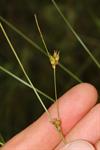 |
| Cyperaceae | Carex opaca | Opaque Sedge | Prairies, eastwards in disturbed areas, such as introduced at old railroad livestock yard and well-established. | IL, MO, and KS south to MS, AR, and OK. |  |
| Cyperaceae | Carex ormostachya | Necklace Spike Sedge | Northern hardwood forests. | S. Canada south to ME, MA, PA, w. VA (Augusta County), e. WV, n. OH, MI, and WI. |  |
| Cyperaceae | Carex ouachitana | Ouachita Mountain Sedge | Dry to dry-mesic slope and ridge forests. | Disjunct in nc. TN and sc. KY from the Interior Highlands of w. AR and e. OK. |  |
| Cyperaceae | Carex ovalis | Egg-bracted Sedge | Grassy balds, disturbed areas. | Native of Eurasia. Known to range in North America from NL (Newfoundland) and NY south to w. NC and ne. TN. |  |
| Cyperaceae | Carex oxylepis | Sharp-scaled Sedge | Bottomlands, calcareous forests. | VA, KY, IL, MO, and OK south to c. peninsular FL and TX. |  |
| Cyperaceae | Carex ozarkana | Ozark Sedge | Seeps, streambanks, depressions in prairies. | AR and e. OK south to n. LA and e. TX. | |
| Cyperaceae | Carex paeninsulae | Peninsula Sedge | Mesic hammocks. | Endemic to FL peninsula, north into ne. FL (Suwanee and Duval counties). |  |
| Cyperaceae | Carex pallescens | Pale Sedge | Grassy balds at high elevations, other grassy openings. | Circumboreal (in ne. North America and n. Eurasia); in North America ranging from NL (Newfoundland), QC, and MN, south to w. NC, e. TN, and MI. C. pallescens is reported to occur on Big Bald, Unicoi County, TN, immediately adjacent to the NC line (Churchill et al. 1992). |  |
| Cyperaceae | Carex panicea | Grasslike Sedge | Wet to dry, usually sandy, acidic fields. | Native of Europe. |  |
| Cyperaceae | Carex pauciflora | Few-flowered Sedge | Open bogs. | Circumboreal, south in North America to NY, WV (Grant, Randolph, and Tucker counties), WI, MN, and WA. |  |
| Cyperaceae | Carex paupercula | Boreal Bog Sedge | Sphagnum bogs, boggy swamps. | Circumboreal, south in North America to n. NJ, c. PA, MI, WI, MN, NM, and WA. |  |
| Cyperaceae | Carex peckii | Peck's Sedge | Mesic to dry calcareous rocky slopes and open forests, alvars. | Boreal North America, reaching furthest south to n. NJ, NY, n. OH, s. MI, s. WI, e. IA, NE, CO, and BC. |  |
| Cyperaceae | Carex pedunculata | Longstalk Sedge | Nutrient-rich dry to mesic forests, usually over calcareous or mafic rocks. | NL (Newfoundland), SK, and ND, south to NJ, w. VA, sw. NC (Gaddy et al. 1984), nw. SC (Gaddy et al. 1984), nw. GA (Dade County) (Jones & Coile 1988), n. AL, c. IN, c. IL, and n. IA. | 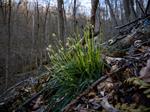 |
| Cyperaceae | Carex pellita | Woolly Sedge | Calcareous fens, wet meadows, depression swamps. | NB west to BC, south to sc. NC, w. VA, sc. NC (Suther Prairie, Cabarrus County), sc. TN (May Prairie, Coffee County), e. TN, AR, and CA. |  |
| Cyperaceae | Carex pendula | Pendulous Sedge | Disturbed areas. | Native of Europe. Introduced in VA (FNA, Kartesz 1999). |  |
| Cyperaceae | Carex pensylvanica | Pennsylvania Sedge | Dry to moist woodlands and forests, grassy balds, shale barrens, rock outcrops. | ME west to s, MB and ND, south to VA, KY, and AR. |  |
| Cyperaceae | Carex perdentata | Sandstone Sedge | Thin soils over sandstone, granite, or limestone, juniper-hardwood woodlands. | OK south to c. TX. | |
| Cyperaceae | Carex picta | Painted Sedge | Dry to dry-mesic oak-hickory forests. | S. IN south through KY and c. TN to nc. GA (Jones & Coile 1988), c. AL, and e. LA. |  |
| Cyperaceae | Carex pigra | Lazy Sedge | Moist forests, bottomlands. | Se. VA west to se. and sc. TN, south to n. FL, s. AL, and ne. MS. |  |
| Cyperaceae | Carex planispicata | Flat-spiked Sedge | Rich to fairly acid mesic forests, on slopes and floodplains. | C. NJ west to s. IN, se. MO, and se. OK, south to c. GA, s. MS, and se. TX. |  |
| Cyperaceae | Carex planostachys | Cedar Sedge | Juniper woodlands. | AR and OK south to TX and Mexico (CHP, CHH, COA, DGO, GTO, MEX, NLE, OAX, PUE, SLP, TAM, TLX, ZAC). |  |
| Cyperaceae | Carex plantaginea | Plantainleaf Sedge, Seersucker Sedge | Rich cove forests, mostly over mafic or calcareous rocks, montane alluvial forests. | NB west to MN, south to MD, NJ, VA, NC, ne. GA (Jones & Coile 1988), e. TN, c. TN, KY, and s. IN. |  |
| Cyperaceae | Carex platyphylla | Broadleaf Sedge | Rich cove forests, mostly over mafic or calcareous rock. | ME and s. QC west to WI, south to , nw. SC, NC, e. TN, and MO. | 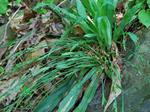 |
| Cyperaceae | Carex polymorpha | Variable Sedge | Dry, acidic ridgetop forests. | ME south to MD, VA, and WV. |  |
| Cyperaceae | Carex praegracilis | Freeway Sedge | Medians of interstate highways. | Native of w. North America south to c. Mexico. This species is apparently spreading through ne. North America as the result of the winter salting of highways. |  |
| Cyperaceae | Carex prairea | Prairie Sedge | Calcareous fens and spring marshes, wet prairies, marshes, bottomlands. | QC west to YT, south to NJ, w. VA, OH, NE, MT, and BC. |  |
| Cyperaceae | Carex prasina | Drooping Sedge | Seepage swamps, brook banks, rocky stream margins, rich forests. | ME, ON, and WI south to GA, MS, and AR; in nearly all TN counties adjacent to NC and VA. |  |
| Cyperaceae | Carex projecta | Necklace Sedge | Moist forests, fens. | NL (Newfoundland), NL (Labrador), and SK south to NC, IN, IL, and IA. |  |
| Cyperaceae | Carex pseudocyperus | Flatsedge Sedge | Calcareous swamps and marshes. | NL west to AB, south to n. NJ, ne. and nw. PA, n. OH, n. IN, WI, MN, and SD. |  |
| Cyperaceae | Carex pumila | Open disturbed sand flats. | Native of Asia. |  | |
| Cyperaceae | Carex purpurifera | Limestone Purple Sedge | Moist, rich cove forests, at low elevations, over calcareous or mafic rocks. | WV (Vanderhorst et al. 2019), w. VA and KY south to n. GA and n. AL, mostly west of the Blue Ridge Mountains, but with scattered disjunct populations on calcareous or mafic sites in the Blue Ridge. |  |
| Cyperaceae | Carex radfordii | Radford's Sedge | Very nutrient-rich, moist cove forests in the Blue Ridge Escarpment region, over calcareous or mafic rocks (especially along the Brevard Fault). | Endemic to the Blue Ridge Escarpment of sw. NC, nw. SC, and ne. GA. | 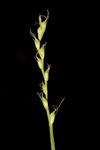 |
| Cyperaceae | Carex radiata | Eastern Star Sedge | Mesic to wet-mesic forests. | NS west to MB, south to SC, AL, LA, and OK. |  |
| Cyperaceae | Carex reniformis | Kidney Sedge | Floodplain forests (including blackwater), marshes, ditches, other wet areas. | VA, IL, and OK south to FL Panhandle and TX. |  |
| Cyperaceae | Carex retroflexa | Reflexed Sedge | Dry to mesic forests, especially over base-rich substrates. | ME, MI and IA, south to n. peninsular FL and TX. |  |
| Cyperaceae | Carex retrorsa | Bottomland forests and nutrient-rich moist forests. | NB and BC, south to n. NJ, sc. PA, IL, UT; reported, apparently erroneously, for DE and MD. |  | |
| Cyperaceae | Carex reznicekii | Reznicek’s Sedge | Dry to mesic forests and woodlands. | RI, NY, PA, KY, and MO, south to SC, sw. GA, se. AL, Panhandle FL, n. MS and AR. To be expected in WV. |  |
| Cyperaceae | Carex richardsonii | Richardson’s Sedge | Open meadows over serpentine; westwards in moist prairies, hill prairies, sand dunes | VT west to AB, south to DC, MD, OH, IN, IA, and SD. |  |
| Cyperaceae | Carex roanensis | Roan Mountain Sedge | Cove forests, moderate to high elevation oak forests, northern hardwood forests. | Sw. PA, w. VA, and e. WV south through e. KY, e. TN, w. NC to se. TN and nw. GA (Smith & Waterway 2008; Smith et al. 2006). First reported for VA by Wieboldt et al. (1998). |  |
| Cyperaceae | Carex rosea | Rosy Sedge | Dry to dry-mesic hardwood forests, especially over basic substrates. | NS west to MB, south to FL Panhandle and TX. |  |
| Cyperaceae | Carex rugosperma | Parachute Sedge | Old fields, shallow soils of rock outcrops, exposed forest margins. | PE west to MN, south to GA, TN, IN, IL, and MO. Reported for South Carolina by Hill & Horn (1997). |  |
| Cyperaceae | Carex ruthii | Ruth's Sedge | Seepage areas, in forest or open areas. | A Southern Appalachian endemic: sw. VA south through w. NC and e. TN to nw. SC and n. GA. |  |
| Cyperaceae | Carex sangamonensis | Midwestern Blunt Broom Sedge, Sangamon Sedge | Bottomland forests, marshes. | OH, IL, and KS, south to SC, AL, LA, and TX. |  |
| Cyperaceae | Carex sartwellii | Sartwell’s Sedge | Bottomland and mesic upland prairies. | QC west to BC, south to PA, OH, IN, IL, MO, CO, and ID. |  |
| Cyperaceae | Carex scabrata | Eastern Rough Sedge | Seepage slopes, brook-banks, often in shade. | NS west to MI, south to NJ, n. GA, OH, and n. IN; disjunct in sw. MO. |  |
| Cyperaceae | Carex schweinitzii | Schweinitz's Sedge | Calcareous fens, spring marshes, seeps, wet meadows, bogs. | VT west to n. MI, south to NJ (and MO?); disjunct in NL (Newfoundland). |  |
| Cyperaceae | Carex scoparia | Broom Sedge | Bogs, swamp forests, marshes, seepy ledges, ditches. | NL (Newfoundland) west to BC, south to GA, MS, and CA. | 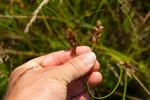 |
| Cyperaceae | Carex secalina | Rye Sedge | Native of Europe. |  | |
| Cyperaceae | Carex seorsa | Weak Stellate Sedge | Swamp forests in acid, organic soils. | MA south to GA and Panhandle FL in the Coastal Plain, scattered inland westward to NY, OH, MI, IN, AR, and TN. |  |
| Cyperaceae | Carex shinnersii | Shinners's Sedge | Ephemeral wetlands. | KS south through w. AR and OK to ne. TX. | |
| Cyperaceae | Carex shortiana | Short's Sedge | Calcareous bottomlands, moist forests, and meadows. | PA, s. ON, IL, and IA, south to w. VA, e. TN, AR, and OK. |  |
| Cyperaceae | Carex siccata | Bronze Sedge | Dry upland habitats. | ME and NT south to NJ, WV, OH, IL, MN, and AZ. |  |
| Cyperaceae | Carex silicea | Seabeach Sedge | Interdune swales, beaches, maritime woodlands. | NL (Newfoundland) south to VA, along the coast. |  |
| Cyperaceae | Carex socialis | Low Woodland Sedge | Blackwater and brownwater swamp forests and bottomlands, forested seepage areas. | Se. and sc. NC south to e. GA, west to e. TX, and north in the interior to s. IN, s. IL, and se. MO. |  |
| Cyperaceae | Carex sparganioides | Bur-reed sedge | Dry to moist, usually nutrient-rich forests. | ME, ON, MN, and SD south to GA, AR, and KS. |  |
| Cyperaceae | Carex species 3 | Fen Sedge | Ultramafic fens. | Endemic (so far as is known) to the Glades, Alleghany County, NC and Grayson County, VA. | |
| Cyperaceae | Carex species 4 | Thin soils over acidic gneiss. | Endemic (so far as is known) to Alleghany County, NC. | ||
| Cyperaceae | Carex species 5 | In seepage in thin soils over granite and granitic gneiss. | Buncombe County NC south to Greenville County, SC and Rabun County, GA. | ||
| Cyperaceae | Carex species 6 | Balsam Sedge | Spruce-fir forests, northern hardwoods forests, and grassy balds. | W. NC and e. TN. | |
| Cyperaceae | Carex species 7 | Moderate to high elevation oak, acid coves, and other hardwood forests. | Southern Appalachians and nearby, lower elevation provinces, the distribution still poorly known, probably VA and KY south to SC, GA, and AL. | ||
| Cyperaceae | Carex species 8 | Northern hardwood forests. | South to Blackwater Falls State Park, WV. | ||
| Cyperaceae | Carex spicata | Prickly Sedge | Fields, lawns, cracks in sidewalks. | Native of Europe and w. Asia. Reported as south to s. NJ, n. DE, c. MD. VA reports said to be erroneous in FNA, but correct records have been recorded since. Undoubtedly more common than records indicate. |  |
| Cyperaceae | Carex sprengelii | Sprengel's Sedge, Long-beaked Sedge | Calcareous forests, woodlands, outcrops, and prairies. Rich woods and alluvial areas. | QC west to AK, south to n. NJ, e. PA (Rhoads & Block 2007), n. DE (historical, New Castle Co.; B. McAvoy, pers. comm.), OH, IN, IL, MO, and NM. |  |
| Cyperaceae | Carex squarrosa | Squarrose Sedge | Bottomland forests, tidal swamps. | CT west to se. ME and NE, south to NC, n. SC, and AR. |  |
| Cyperaceae | Carex sterilis | Sterile Sedge | Mafic and calcareous fens and swamps. | NL (Newfoundland) west to SK, south to sw. VA (Grayson County), ne. TN (formerly), IL, and MO. First reported for VA by Wieboldt et al. (1998). | 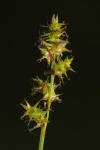 |
| Cyperaceae | Carex stipata var. maxima | Large Stalk-grain Sedge | Marshes, ditches, sloughs, alluvial forests, cypress-gum forests. | NJ south to c. peninsular FL, west to TX, north in the interior to s. MO, s. IN, w. TN, and w. KY, primarily on the Coastal Plain. | |
| Cyperaceae | Carex stipata var. stipata | Stalk-grain Sedge, Awl-fruit Sedge | Marshes, ditches, alluvial forests. | NL (Newfoundland) west to AK, south to SC, TN, KS, and NM. |  |
| Cyperaceae | Carex straminea | Straw Sedge | Pools in river scours, fresh tidal and nontidal marshes, other wetlands, wet oak savannas. | MA west to WI, south to NC, KY, and MO. | 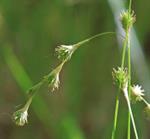 |
| Cyperaceae | Carex striata var. brevis | Walter’s Sedge | Pocosins, limesink ponds, small depression ponds, clay-based Carolina bays, acid peaty swamps, wet savannas (dominated by Pinus serotina and/or Taxodium ascendens). | E. MA south to SC. |  |
| Cyperaceae | Carex striata var. striata | Walter’s Sedge, Pocosin Sedge | Pocosins, limesink ponds, small depression ponds, clay-based Carolina bays, acid peaty swamps, wet savannas (dominated by Pinus serotina and/or Taxodium ascendens). | SC south to c. FL and Panhandle FL. |  |
| Cyperaceae | Carex striatula | Lined Sedge | Bottomland and other nutrient-rich forests. | CT, se. NY, PA, s. OH, and w. KY south to n. FL, Panhandle FL, and s. MS. Former attribution of a wider distribution to the west (west of the Mississippi River) represents Carex ignota. |  |
| Cyperaceae | Carex stricta | Tussock Sedge, Upright Sedge | Bogs, sedge meadows, seeps, swamps, depression ponds, old beaver ponds. | QC and NS west to MB, south to GA, AL, MS, and TX. |  |
| Cyperaceae | Carex styloflexa | Bent Sedge | Bogs, wet forests, acid stream swamps. | CT west to s. OH, south to c. peninsular FL and se. TX. |  |
| Cyperaceae | Carex suberecta | Prairie Straw Sedge | Fens, calcareous wetlands, marshes, wet prairies. | ON and MN south to sw. VA, WV, OH, IN, IL, AR, and TX. |  |
| Cyperaceae | Carex superata | Limestone Forest Sedge | Mesic calcareous forests and woodlands. | Sc. NC, nc. SC, sw. VA, sc. KY, and ne. MS, south to Panhandle FL and s. AL. Reported for sw. VA (as C. willdenowii var. megarrhyncha) by Wieboldt et al. (1998). |  |
| Cyperaceae | Carex swanii | Swan’s Sedge | Nutrient-rich forests, woodlands, and openings. | NS, s. MI, s. WI, south to nw. SC and ne. AR. |  |
| Cyperaceae | Carex sylvatica | European Woodland Sedge | Pastures, lawns. | Native of Europe. |  |
| Cyperaceae | Carex tenax | Wiry Sedge | Open white sands of longleaf pine sandhills. | Sc. NC south to Panhandle FL, west to MS; also in sw. LA and se. TX. |  |
| Cyperaceae | Carex tenera | Slender Sedge, Quill Sedge | Low forests, upland forests over hardpans, mesic prairies, wet ditches. | NS west to BC, south to VA, NC, n. GA, ne. TN, MO, KS, WY, and OR. |  |
| Cyperaceae | Carex tetanica | Rigid Sedge | Moist forests, calcareous seeps, calcareous fens, wet prairies, wet meadows. | MA west to MN, NE, and AB, south to NJ, MD, VA, e. TN (Campbell County; A. Floden, pers. comm.), KY, MO, n. AR, and NE. Reports from NC are all based on misidentifications. |  |
| Cyperaceae | Carex tetrastachya | Four-angle Sedge | Wet prairies and swamps over calcareous substrates. | OK south to LA and TX. | |
| Cyperaceae | Carex texensis | Texas Sedge | Lawns, pastures, roadsides, usually weedy, especially in rocky or sandy soils. | NY, OH, and KS south to FL and TX. |  |
| Cyperaceae | Carex thornei | Thorne's Sedge | Mesic deciduous forests, often in the upper floodplain. | Endemic to the drainage of the Apalachicola/Chattahoochee and Flint in s. GA and s. AL south to Panhandle FL |  |
| Cyperaceae | Carex timida | Timid Sedge | Calcareous, dry to mesic woodlands and forests. | Scattered and disjunct, from OH, IN, s. IL, and s. MO to KY, TN, n. AL, and AR. |  |
| Cyperaceae | Carex tonsa | Shaved Sedge | Dry rock outcrops, xeric disturbed areas, old fields. | QC west to AB, south to VA, WV (Vanderhorst et al. 2013), nw. SC, n. GA, e. TN, IN, and WI. |  |
| Cyperaceae | Carex torta | Streambed Sedge, Twisted Sedge | Rocky streambeds, often dominant in patches in the beds of mountain streams, along their banks, and on rocky or cobbly islands. | NS west to ON, south to sc. NC, SC (Gaddy 1981), nc. GA (Jones & Coile 1988), AL, nw. MS, s. AR, and e. OK. |  |
| Cyperaceae | Carex triangularis | Eastern Fox Sedge | Moist forests, ditches, other wet sites. | SC and GA west to KS and TX. |  |
| Cyperaceae | Carex tribuloides | Blunt Broom Sedge | Bottomland forests. | NB west to MN and NE, south to c. peninsular FL, GA, TN, MO, and KS. |  |
| Cyperaceae | Carex trichocarpa | Hairy-fruited Sedge | Calcareous fens, wet meadows, marshes. | QC west to MN, south to DE, w. NC, WV, IN, and MO. |  |
| Cyperaceae | Carex trisperma | Three-seeded Sedge | Bogs, seeps, and swamps at high elevations (in NC and VA), usually growing in living Sphagnum, in shaded situations under shrubs or trees in montane wetlands, northward in bogs at low elevations. | NL (Labrador) west to SK, south to NJ, MD, OH, n. IN, IL, and MN; and in the mountains to w. NC and WV. |  |
| Cyperaceae | Carex tuckermanii | Calcareous swampy forests and wet meadows. | NB and MN south to WV, sc. PA, NJ, MD, and IL. A report for Alleghany County, NC appears to be erroneous. |  | |
| Cyperaceae | Carex turgescens | Pinebarren Sedge | Sandhill seepage bogs, streamhead pocosins, pocosin-sandhill ecotones, canebrakes, cypress domes and stringers, in highly acidic, sandy-peaty soils. | Sc. NC south to Panhandle FL, west to se. LA, a Southeastern Coastal Plain endemic. |  |
| Cyperaceae | Carex typhina | Cattail Sedge | Bottomland forests, swamp forests. | ME and QC west to WI and se. MN, south to GA, Panhandle FL, and e. TX. |  |
| Cyperaceae | Carex umbellata | Parasol Sedge | Limestone barrens, other barrens and glades, old fields, mowed areas, other open habitats. | Greenland west to AK, south through MN to TX and eastward. | 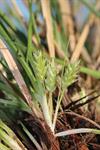 |
| Cyperaceae | Carex utriculata | Beaked Sedge | Wet meadows, calcareous seeps, spring marshes. | Boreal American, ranging south to DE, w. VA, nw. and sw. NC, ne. TN (Johnson County, where perhaps extirpated), IN, NE, NM, and CA. Recently verified for NC. | 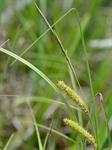 |
| Cyperaceae | Carex venusta | Dark Green Sedge | Bay swamps, peat bogs, mossy wetlands, and other wet habitats. | Se. VA south to Panhandle FL, on the Coastal Plain. |  |
| Cyperaceae | Carex verrucosa | Pocosins, wet pinelands, pondcypress ponds, domes, stringers, and savannas. | Se. NC south to south to s. FL, west to w. LA and e. TX. | 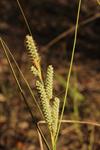 | |
| Cyperaceae | Carex vesicaria | Inflated Sedge | Bogs, spring marshes, depression ponds, mafic fens. | Circumboreal, ranging south in North America to DE, w. VA, nw. NC, KY, IN, MO, NM, and CA. |  |
| Cyperaceae | Carex vestita | Velvet Sedge | Low forests, bogs, seepage swamps, wet clearings and depressions. | S. ME south to se. VA, e. TN, and c. NC. See Ungberg (2022) for discussion of its occurrence in NC. |  |
| Cyperaceae | Carex vexans | Florida Hammock Sedge, Vexed Sedge | Marshes, ditches, swamps, hydric hammocks. | E. Panhandle FL south to s. FL. |  |
| Cyperaceae | Carex virescens | Ribbed Sedge | Nutrient-rich forests, woodlands, and openings. | S. ME, NY, and s. MI, south to e. VA, w. NC, nw. SC, and MO. |  |
| Cyperaceae | Carex viridistellata | Calcareous fens. | C. MI and n. IN south to extreme s. OH and c. IN. |  | |
| Cyperaceae | Carex viridula ssp. oedocarpa | Wet, acid areas. | Native of Europe. | ||
| Cyperaceae | Carex viridula ssp. viridula | Green Sedge | Calcareous sand flats, pond shores, fens. | Circumboreal, south in North America to n. NJ, e. PA, nw. PA, c. OH, n. IN, ne. IL, WI, SD, NM, UT, and CA. |  |
| Cyperaceae | Carex vulpinoidea | Fox Sedge | Low fields, ditches, fens, seeps, tidal freshwater marshes, other wet (and especially disturbed) sites. | NL (Labrador) west to BC, south to FL, TX, SON, and CA, and Mexico (MIC, OAX, SON). |  |
| Cyperaceae | Carex wiegandii | Wiegand's Sedge | Bogs. | NL west to ON, south to MA, nc. PA, MI. |  |
| Cyperaceae | Carex willdenowii | Willdenow’s Sedge | Calcareous mesic forests, but also in more acidic dry-mesic upland oak forests. | MA, VT, NY, s. ON, and c. IN, south to nc. SC, n. AL, and s. IL; disjunct in c. AR. |  |
| Cyperaceae | Carex woodii | Wood's Sedge | Moist slopes and cove forests over mafic rocks (such as amphibolite), ultramafic rocks (such as olivine), or felsic rocks. | NY west to MB, south to NC, nw. SC (Gaddy et al. 1984), n. GA, and MO. |  |
Cite as...